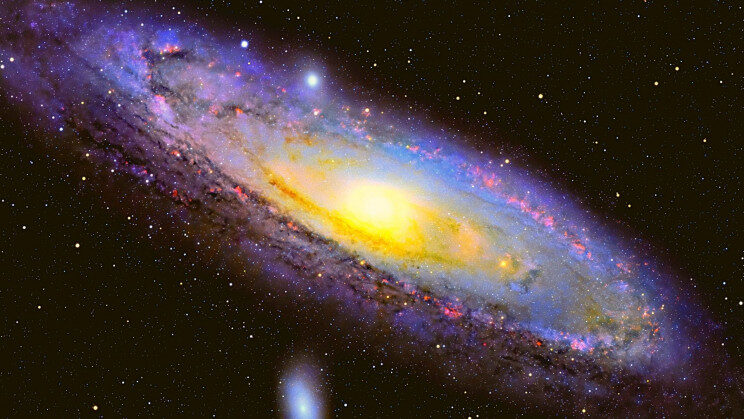
© Rastan / iStockThe Andromeda Galaxy, which is much like ours.
It's never been seen before, and they don't know what it is.
If you're swimming in a large volume of water, it's difficult to judge the properties of distant floating objects with exacting precision, and the same goes for our star system, swirling around the galaxy.
This is perhaps why scientists have just discovered a new structure encompassing a long curl of gas so gigantic that no one can say whether or not this is a section of a galactic spiral arm we simply hadn't noticed until now, according to a recent study
shared on a preprint server and accepted for publication in
The Astrophysical Journal Letters.
This could change our understanding of how the Milky Way behaves, pending more research.
A newly discovered colossal filament of gas in the outer regions of our galaxyCalled Cattail, the filament of gas in the Milky Way could be the largest ever discovered, and "appears to be so far the furthest and largest giant filament in the galaxy," said the team of astronomers at Nanjing University, China, in their recent paper.
"The question about how such a huge filament is produced at the extreme galactic location remains open," they continued. "Alternatively, Cattail
might be part of a new arm ... though it is puzzling that the structure does not fully follow the warp of the galactic disk." While the find is surprising, that it wasn't made until now is more understandable, since reasons abound for why mapping our galaxy in three dimensions is no easy feat.
One reason involves the inherent difficulty in calculating the distance of cosmic objects. Second, the galaxy is full of material and distracting signals, which can heighten the challenge of weeding out objects that happen to be aligned from our unique perspective from those that are in fact part of a grouping of related objects. In the case of Cattail, the Nanjing team of astronomers, led by Chong Li, employed the massive
Five-hundred-meter Aperture Spherical radio Telescope (FAST) to identify clouds of neutral atomic hydrogen (HI). These clouds typically reside in the spiral arms of galaxies like the Milky Way, and by analyzing the subtle varying patterns of hydrogen light, astronomers can map the number and dispersal of the Milky Way's arms from our position within one of them.
New 'galactic filament' appears larger than Gould's BeltBack in August 2019, the astronomers used FAST to search for HI radio emissions, which produced data that described a colossal structure. After calculating its velocity, they discovered it was consistent with a distance of roughly 71,750 light-years from the center of the galaxy. That's way out in the outer regions! This is significant because it's much farther out than any previously identified spiral arms of our galaxy, but also because it would have to be unspeakably massive in scope; an arm roughly 3,590 light-years long and 675 light-years wide, according to the FAST data. But this was soon surpassed: After the researchers conjoined their findings with more data from the HI4PI all-sky HI survey, they realized
this potential spiral arm was even bigger, up to 16,300 light-years long!This would make it an even more mind-jarringly giant gas structure,
even bigger than Gould's Belt, which was recently discovered to be 9,000 light-years long. But while this is exciting, the discovery raises some big follow-up questions for astronomers worldwide to answer. For example, how did such a gigantic gas filament end up so far from the galactic center? Additionally,
it appears to lack a certain "wobbly" feature that other spiral arms of our galaxy exhibit (the traces of an ancient intergalactic collision). For now, "these questions remain open with the existing data," said the researchers in the study. But "The observations provide new insights into our understanding of the galactic structure." Hear, hear.
Comment: See also:
- Milky Way not unusual, surprising astronomers
- Why is this weird, metallic, flashing star hurtling out of the Milky Way?
- Andromeda galaxy halo 'bumps into' the halo around the Milky Way
- Mysterious 'wave' of star-forming gas may be the largest structure in the galaxy
- Hum of plasma waves in the 'void' of interstellar space detected by Voyager 1
- Mystery of monster star's dimming detailed in new Hubble study
And check out SOTT radio's: